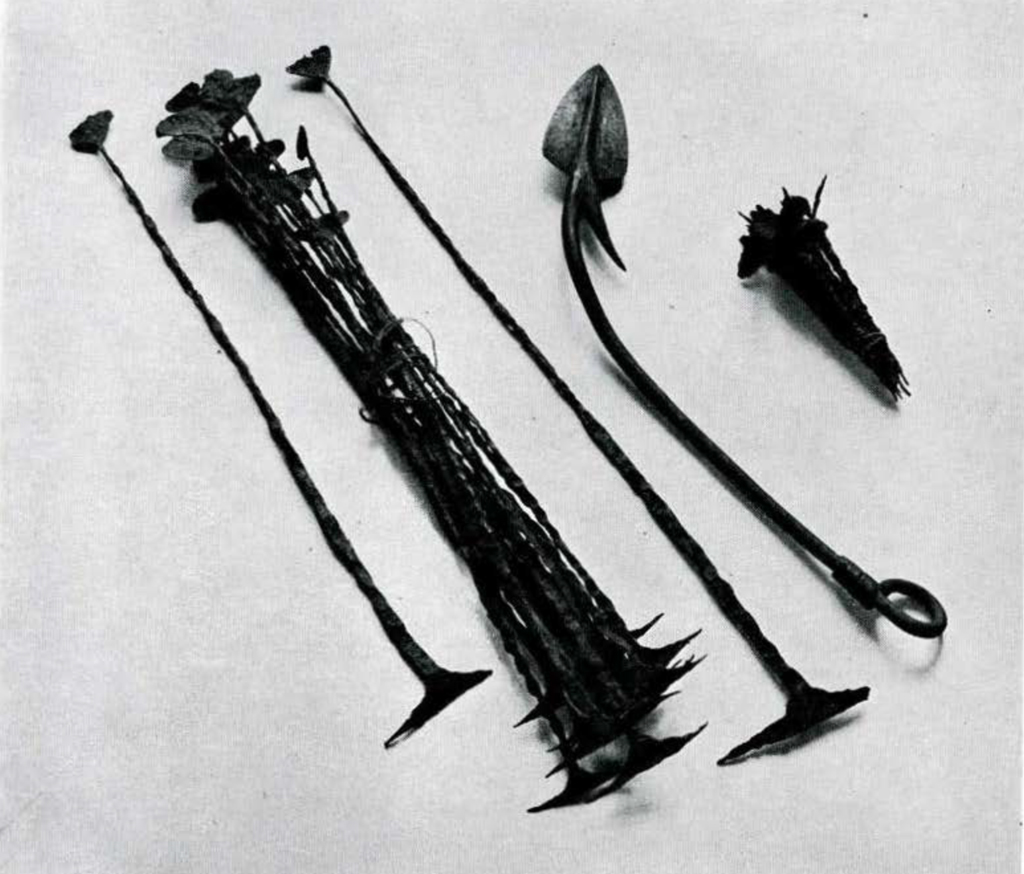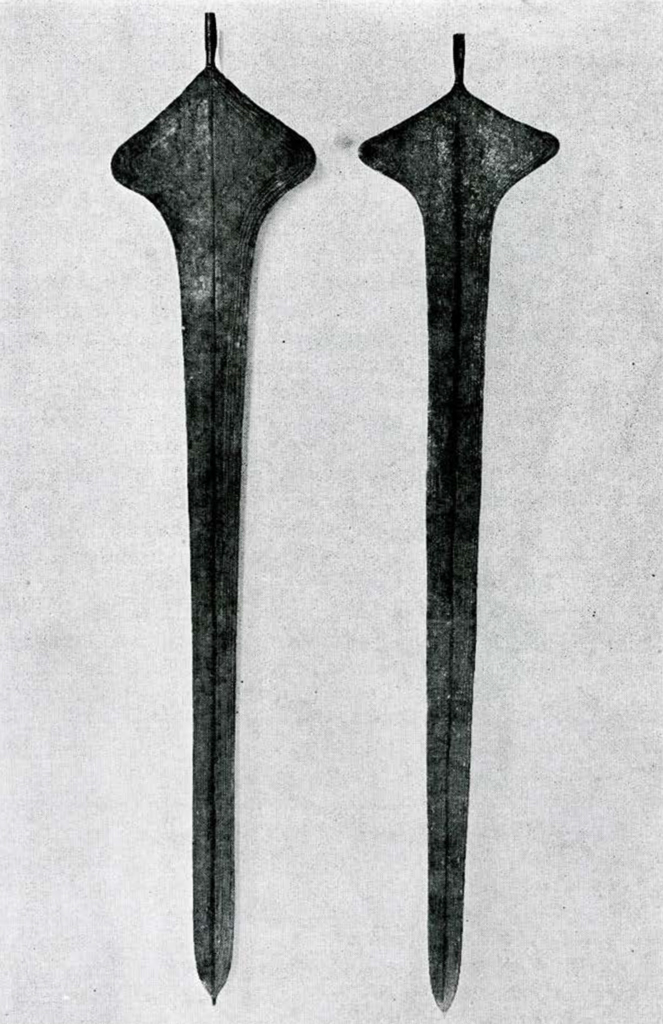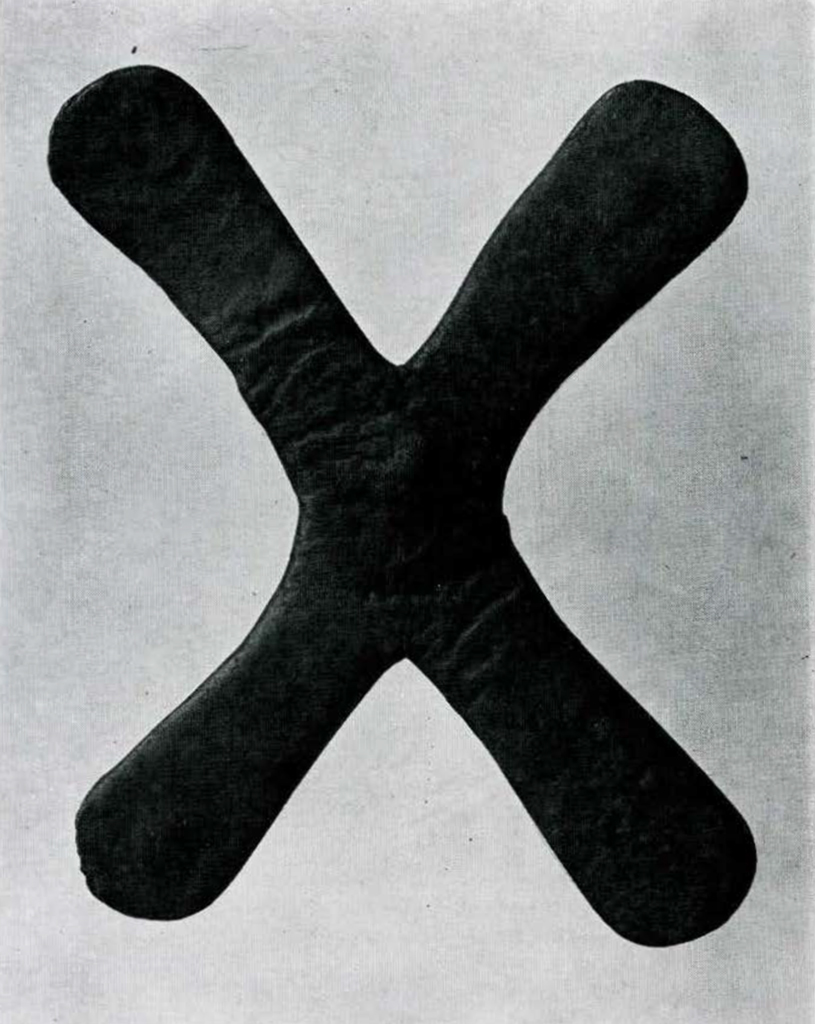In an age in which money has become the ultima ratio of human society and in which its function has become interwoven with the political interplay of notions, it is difficult to realize that in the not too distant past money had a less exacting position in human economy. While even today money may still be regarded as a “medium of exchange,” in the economy of the twentieth century its real meaning is often shrouded by complicated lows and theories which are now believed to control the modern money market. Although the intricacies of our modern money economy ore normally beyond the comprehension of the average individual, money naturally remains essentially a medium of exchange, and in that respect modern financial transactions do not appear to differ fundamentally from those of our forbears, who, instead of purchasing services with bank-notes, paid in grain or cattle, or instead of buying tools with coins, exchanged them for consumer goods which they possessed and which the seller of the tools desired to secure.

Museum Object Number: 16005 / P3993 / 44-14-120
Image Number: 21332
But such a simple exchange or barter of goods is not a money economy and the media which ore arbitrarily used in the exchange are not money. Media of exchange must be standardized before they can be regarded as money. It is not always easy to determine precisely which media fall into the category of money and which do not. Commodities or consumption goods which are offered as barter obviously cannot be regarded as money, since the media or tokens which are used in an exchange must have the character of currency, and must be recognized as such by the people among whom they circulate. Exchange media are money when goods offered for sale can be purchased with them at all times. M. J. Herskovits in his book The Economic Life of Primitive Peoples defines money as “any kind of … denominator that itself is not a consumption good, whether it be of metal, shell, stone or other material, that is regarded as part of a system of graded equivalents, and is used in payment for goods and services.” Although the elimination of consumption goods as currency may in certain instances assist in defining money, numerous examples arise in which by standardizing such goods according to size and shape they have adequately functioned as a media of exchange. Thus salt, so standardized, had the value of a currency in some parts of Africa and should not be excluded from the category of money merely because it is also a consumption good. Even livestock may have monetary values under certain conditions. In some sections of East Africa, chickens, goats and cattle have been graded into a system by which one head of cattle is valued as four (or five) goats, and one goat is equal to ten (or more) chickens.
Money, as we understand it in our own society, must have certain characteristics: it must be possible to attach a specific value to it; it must be divisible into small enough units so as to permit the purchase of objects of small value; it must be easily recognized by everyone; it should be portable; and it should not be readily subject to destruction. According to our experience and belief, gold and silver meet these requirements best; but other people have found other tokens which have at least temporarily served these functions to their own satisfaction. Hence the well-known cowrie shells which circulate as money in many areas of Africa fulfill, after a fashion, the requirements which we demand from modern money (Fig. 2).

Image Number: 21333
As cowrie shells are indigenous to the shores and islands of the Indian Ocean, they are not available in the African inland regions and since their introduction these shells hove remained comparatively scarce, inasmuch as their supply could only be replenished by imports. Once cowrie secured universal acceptance within the area as a medium of exchange, dependence on outside supply guaranteed a somewhat stabilized value. This value was in port based on the fact that cowrie, like precious metals in our society, were in great demand for ornamental purposes. Inasmuch as the value of cowrie currency was maintained by the balance of supply and demand, it naturally changed from region to region and from time to time.
In addition to functioning as a medium of exchange which possessed the necessary stability of value, cowrie currency also fulfilled the requirements expected of money in our society. The smallest unit, namely one single shell, had a small enough value to purchase the smallest quantities of goods. Cowrie shells were easily recognizable and obviously safe from imitations, as well as being quite portable for normal purchases. The limited durability of the fragile shells may, however, have been a shortcoming when compared with modern requirements.
Dog-teeth, which circulate as money among the Admiralty Islanders of Melanesia, are in many respects similar to cowrie. Their value is fixed by their comparative scarcity and by the fact that their supply cannot be increased without a great expenditure of labor. One of these teeth represents little enough value to purchase objects of small worth, while one large dog’s tooth will buy ten taro or ten coconuts or forty betel nuts or one bundle of bark fiber. These teeth are easily portable, but like cowrie are not imperishable enough to satisfy modern monetary standards.

Museum Object Number: AF4758 / AF4757A AF4757B
Image Number: 21234
A rather complex system of money has been developed in the Rossel Island off New Guinea. Here two kinds-Dap and Kö-form two independent, but parallel, monetary systems. Dap money consists of single pieces of polished and triangularly shaped shells “made from a mollusc allied to the Spondylus.” They range in color from white to yellow and from orange to red and the value of each piece – twenty-two different categories are distinguished – appears to be determined by its color. Kö money – of which there are sixteen values – consists of strings of ten perforated and uniformly shaped disks having approximately the same diameter and thickness (1.5 to 3 centimeters); they are probably made from the shell of the giant clam. Individual disks of Kö are not money, only sets of ten are recognized in money transactions: “a service or commodity is priced in terms of so much Dap and so much Kö.” Only low price commodities are priced in Dap only (Fig. 3).
A most intriguing aspect of this Rossel Island money is the peculiar way in which these “coins” are given their different values. The higher valued Dap are not simple multiples of the lower or the lowest value, but “the value of a coin x in terms of a coin y is expressed by the length of time y would have to be let out on loan in order that x be repayable. If the thought of the islanders were sufficiently systematic, then all the twenty-two values of Dap could be expressed in terms of No. 1 and time; No. 2 would be No. 1 at interest for a few days-No. 22 would be No. 1 at compound interest for several years. Their ideas, however, are not fully systematized to this extent, but the native does systematically apply the principle that a No. X if lent for a few days requires the return of a No. (X +1) – if lent for a rather longer period the borrower will be required to repay a No. (X+2) and so on.”
Although this system of standardizing the various monetary values is a rather unorthodox one, the Rossel Island currency has many of the features of regular money. The value of these shells is maintained by the scarcity of their supply, and evidently there have been no additions to the original Kö money stack since that remote past when this system evolved. Although the group 1 to 7 of the Dap have been replenished occasionally, the others are old pieces. In investigating this unique monetary system, W. E. Armstrong found that on this island there were only eighty-one “coins” representing values of the class 15 to 22. This currency also complies with the classical monetary requirements in that it has small enough units to make it useful in everyday transactions, is easily portable and has proven comparatively imperishable over an apparently long period of time.

Museum Object Number: AF3555A / AF3555B / AF3555C / AF3555D / AF3551
Image Number: 21335
These and other simple types of money react to an oversupply of currency in a way analogous to modern money: their purchasing power is reduced. When European traders brought shiploads of cowrie to West Africa, its value was greatly debased and a price inflation occurred. The expansion of Melanesian dog-teeth currency by imports from China and Turkey resulted in an inflation which caused prices of consumer goods to rise to ten times their former quotation. (Only a government order checking imports stabilized prices.) The currency of North West Coast Indians based upon dentalium shells (see below) was almost entirely devaluated by the import of large quantities of these shells. It is interesting to note that an earlier attempt to force into circulation imitations made of china failed. Similar devaluations have occurred in many ports of the world.
Although some pre-literate peoples have made monetary systems an integral part of their economy, no people have invested currencies with the multiplicity of function commonly found in the societies of contemporary Eur-American civilization. Even in those exotic cultures in which currency is most prominently featured it is still impossible to acquire many objects in exchange for money. Pre-literate people, with unvarying uniformity, recognize a class of goods which, due to the ascription of magico-religious and social values, are outside the pale of commercial transactions. Of these, land may be cited as the most universal example. Aside from the class of non-commercial goods, one frequently finds others whose value is so excessive that the quantity of money required in exchange for them would be so large that purchase is virtually impossible. In these cases, exchange by barter remains the predominant form of transaction, and money serves primarily in the exchange and purchase of such commodities as are needed in daily life and which are of smaller value. But even such a simple trade may be not without obstacles. Thus H. Barth narrates that in the middle of the last century, when travelling through the African kingdom of Bornu, it was sometimes difficult to purchase food in the markets, in spite of the fact that both cowrie and the Maria Theresa dollar were recognized as valid currencies. Not all peasants accepted cowrie for the produce they offered, so that the buyer who desired grain had to change his dollar into cowrie (one dollar ca. 3,000 cowrie), then perhaps purchase a shirt or some other article which the peasant was willing to take for his grain. The chain of the different barter processes was often long and complicated, so that Barth’s servants returned home exhausted from their trip to the market.

Museum Object Number: AF3549
Image Number: 21336
Aside from money in the strict sense of the word, tokens of a quasi-monetary value were utilized in some primitive societies. In many sections of Central Africa, different iron objects, such as knives, hoes, spear and arrow points, and throwing irons (Fig. 5) as well as unwrought iron pieces, were utilized in the exchange of goods. Many of these objects were never finished so as to serve as knives or hoes, but were used in an unfinished form, often differing in shape and size from the article used in daily life. These articles were produced to serve as trade symbols, and yet it would be difficult to recognize all of them as money in the same sense as the objects discussed above. Many of these iron objects are rarely used in daily trade, since their value is comparatively high, so that their economic function is restricted to “big business.” They were most commonly used as a bride-price in the marriages of the well-to-do, and since the latter accumulated them in order to enhance their social prestige, these iron tokens were symbols of wealth rather than actual money. These objects have a barter value which permits their being valued in terms of other barter goods, or they may be equated with established standards of other monetary systems.
Among the Galla of Southern Ethiopia, where bands of iron (two feet long, one inch wide) called “dorma” were in circulation, sixteen (or fifteen) of these were equated with an Ethiopian or Maria Theresa dollar and thus retained a monetary value. In some of the northern sections of the Belgian Congo, iron knives (not real knives) called “mbeli” had a value of about twenty-five Belgian centimes (longer ones about thirty-five centimes). Iron or brass rings, mode of rods about one foot long, as used among the Bali of Cameroon, were valued at about twenty-five German pfennig in 1900.

Museum Object Number: AF3554
Image Number: 21337
It is interesting to note that in the region where knife (mbeli) “money” was in use, the Belgian Government tried to introduce lower values by issuing brass wire (fourteen centimeters long and three to four millimeters in diameter) at government stations. These wires were called “mitako,” and were to have a value of five Belgian centimes. But the people were reluctant to accept them because, from their point of view, the barter and commodity value of these short pieces, which could not be put to any special use, was negligible. Long pieces of the same brass wire were valued much higher than the comparable number of wires of “mitoko” length.
In this same category of quasi-money belong the well-known copper crosses (Fig. 7) which were encountered by the early explorers in the Katanga region and which were found in th excavations of the Zimbabwe ruins of Southern Rhodesia. The value of these so-called Honda crosses was even higher than that of the objects mentioned above, so that only wealthy people could own them and exchange them in major transactions, such as in the payment of the bride-price or of tributes to political overlords. Their importance as a regular currency was negligible.

Museum Object Number: P1744
Image Number: 21338
All these metal objects which served as barter money had a real commodity value. The unfinished iron hoe could be turned into a real hoe and thus become a useful tool, or the copper cross could be worked into copper bracelets for which there was a ready market. But we find among some primitive groups types of “money” which do not answer such utilitarian motives. The mat “money” of the New Hebrides may serve as such on example. Here long and narrow pieces of mats are manufactured for the sole purpose of serving as tokens of wealth. In order to increase their value, which is judged by age and blackness, the mats are stored in special houses where, in order to blacken them, a fire is kept burning. While it is theoretically possible to buy almost anything with them, they are primarily used for the purpose of securing membership in a club, namely the Sugue secret society. Wealthy persons will exhibit these mats in their houses, and it is stated that the social position of the owner is not even endangered when the mats have decayed. It would be wrong to equate these mats – as some authors have done – with modern paper money; if any comparison should be desired, reference to costly oriental rugs would be more in order. The latter, although not money, may achieve good returns in any barter process and no doubt have considerable bearing on the owner’s social prestige.
A function similar to the mats of the New Hebrides is performed by the huge “stone money” of the Caroline Islands. Particularly on the island of Yap, millstone-like blocks, often weighing more than one hundred pounds and having a diameter of between one and twelve feet, are stored as symbols of wealth by persons of high social position (Fig. 8). In the economy of Yap islanders, these stones-many of which have never changed ownership-are of no use whatsoever. They are significant as wealth symbols and in that respect may be compared with “valuables” in our own society. How fictitious is the value of this “stone money” may be demonstrated by the fact that actual possession is not necessary in order to maintain the social status which these stones normally secure the owner. According to one story, a stone which was being brought by boat to the island of Yap sank into the sea. When the party reached home they testified that the stone “was of magnificent proportions and of extraordinary quality, and that it was lost through no fault of the owners. There-upon it was universally considered … that the mere accident of its loss overboard was too trifling to mention…. The purchasing power of that stone remained, therefore, as valid as if it were leaning visibly against the side of its owner’s house.”
It is important to realize that it is not always easy to draw clear distinctions between money proper, quasi-money, and tokens of value, since in their use they may overlap. This difficulty is increased by the fact that at a time when these tokens still enjoyed wide popularity, few anthropologists paid attention to economic questions in primitive communities. With the introduction of European culture, primitive economies have been so changed that it is now almost impossible to study the function of primitive money in its original setting.

